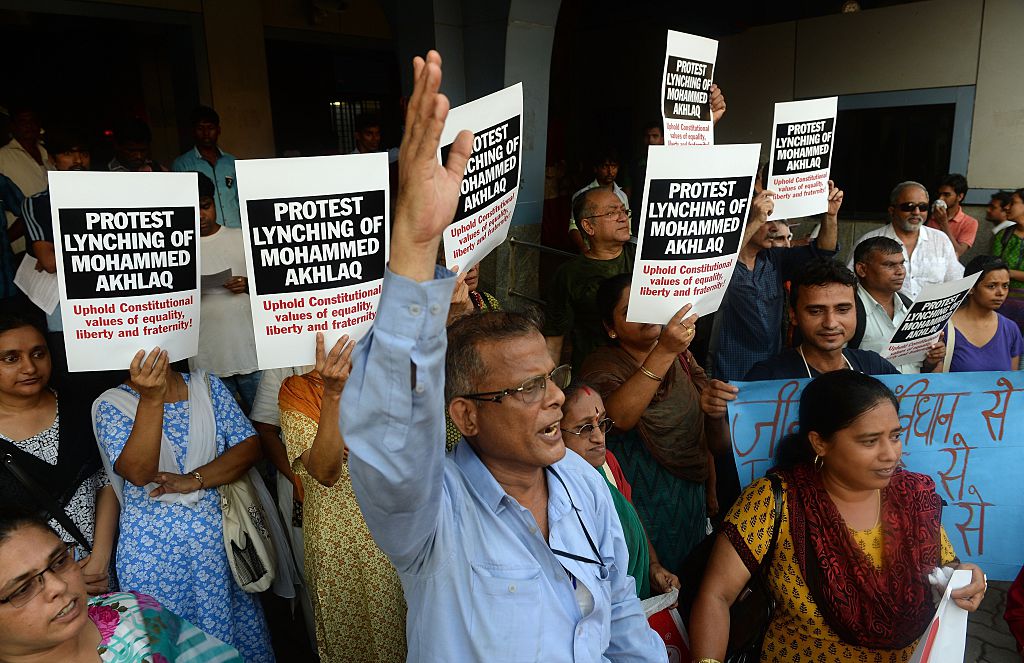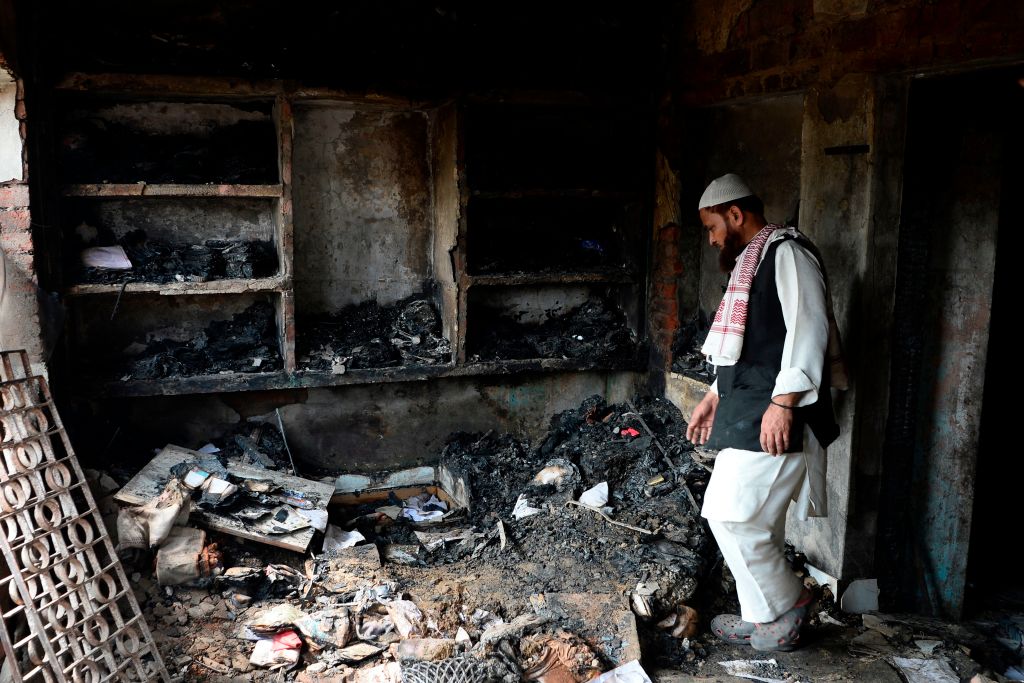- Sunday, May 05, 2024

By: Shubham Ghosh
THE lynching of Mohammed Akhlaq in Dadri in the northern Indian state of Uttar Pradesh in September 2015 was seen by many as what was coming in what is being perceived as a Hindu majoritarian rule in India. Six years later, the fears have found firmer roots as unprovoked attacks on Muslims by Hindu mobs have become a routine affair in the country with very little condemnation coming from the central government.
Last month, a video went viral on social media showing a little girl clinging on to her Muslim father as a Hindu mob beat him up. The terrified minor was seen begging the mob to spare the 45-year-old rickshaw driver who was made to parade on the streets of Kanpur, also in Uttar Pradesh which is governed by chief minister Yogi Adityanath, a Hindu monk-politician belonging to prime minister Narendra Modi’s Bharatiya Janata Party (BJP).
The attackers asked the Muslim man to chant “Hindustan Zindabad” (Long Live Hindustan) and “Jai Shri Ram” (Hail Lord Rama) – a popular greeting in India which has been turned into a murder cry by majoritarian lynch mobs in recent times.

In the case of the rickshaw driver, the end was not tragic as the police rescued him and his daughter. Three men were arrested for the act but it was only a day later that they were freed on bail.
In another instance, this time in Indore in the central Indian state of Madhya Pradesh, a Muslim bangle-seller was thrashed by a Hindu mob. He was warned to stay away from the city’s Hindu areas in future. The man named Tasleem Ali filed a police complaint in which he alleged that five to six men hurled communal slurs at him for selling bangles in a Hindu-dominated area and beat him up. He said they also robbed him of money, mobile phone and other belongings.
But Ali’s ordeal did not end there. He himself was arrested the very next day after the teenage daughter of one of his alleged attackers accused him of molesting her – a charge that Ali’s family and neighbours strongly denied.
Eyewitnesses, on the other hand, told the Indian media that the man was attacked because of his Muslim identity and the molestation accusation was a planned one.
In a third incident that also happened last month, the food stall of a Muslim family was vandalised by alleged Hindutva groups because it was named after Hindu god Srinath or Lord Krishna. A video of that incident also went viral and the family had to change the name of the stall into ‘American dosa corner’. The place of this incident is Mathura, the birthplace of Lord Krishna, also in UP.
These series of incidents were among several more that show how anti-Muslim violence has gained pace in India and according to the country’s secular voices, these acts of violence have gone up since the coming of Modi, who is also popular among the Hindutva groups as the ‘Hindu Hriday Samrat’ (the ruler of the Hindu heart), to power in 2014.
Alishan Jafri, a freelance journalist who has been documenting attacks on Indian Muslims for the past three years, told the BBC, “The violence is overwhelming. It’s rampant and common and also very acceptable.” He said he comes across “three-four such videos every day” but is able to verify only one or two which he shares on social media.
“Communal violence is not a recent phenomenon, but it grows in sync with the strategies of those in power and political mobilisation,” Prof Tanvir Aeijaz, who teaches politics science at Delhi University, told the BBC.
“The distrust was always there but cleavages have been sharpened now by religious nationalism and ethno-nationalism.”
During Modi’s first term in office (2014-19), India saw several cases of Muslims being attacked by so-called “cow vigilantes” over rumours that they had consumed beef or they were trying to smuggle cows, an animal that Hindus worship. Akhlaq’s death in Dadri was the result of the same.
Modi though did not condone such attacks but he did not condemn them quickly or strongly either.
Prakash Javadekar, a senior BJP leader and a former minister in the Modi government, told the news outlet that “the government believes that lynching is bad, wherever it happens. But law and order is a state subject and it is their responsibility to deal with it”.
He also accused the media of being biased and doing selective journalism by only focusing on attacks on Muslims.
“If you look at official data, there were 160 Hindus among the 200 people who were lynched. People of all faiths were targeted,” he said but stopped short of giving details of where that data could be found.
A fact-checker website, which counts “hate crimes” in India, said in 2019 that more than 90 per cent of the victims of such crimes in the past 10 years were Muslims.
The accusation that the Modi government patronises those who conduct these attacks got a stronger basis when in 2018, a former minister of the same garlanded eight Hindus convicted of lynching a Muslim trader in Ramgarh in the eastern Indian state of Jharkhand.
“Such attacks have become so common in our country today only and only because of the impunity these thugs enjoy,” Hasiba Amin, a social media co-ordinator for the opposition Indian National Congress, said.
“Today hate has gone mainstream. It is cool to go attack Muslims. The hate mongers are also rewarded for their actions,” she said.
On many occasions, the Muslims are not physically targeted. In those cases, the violence takes a more subtle and insidious form which aims at demonising the minority community.
For instance, when the Covid-19 pandemic started spreading in India in early 2020, Hindu leaders of India accused Muslim men who assembled a religious gathering in Delhi and called it a “corona jihad” to spread the deadly virus.
Thereafter came the “roti jihad” whereby Muslim cooks were being accused of spitting on roti, a handmade bread, to spread the virus against the Hindus.
Besides, several states also introduced laws to curb “love jihad”, a term that Hindutva groups use to imply that Muslim men target Hindu women to convert them to Islam through marriage.
![]()